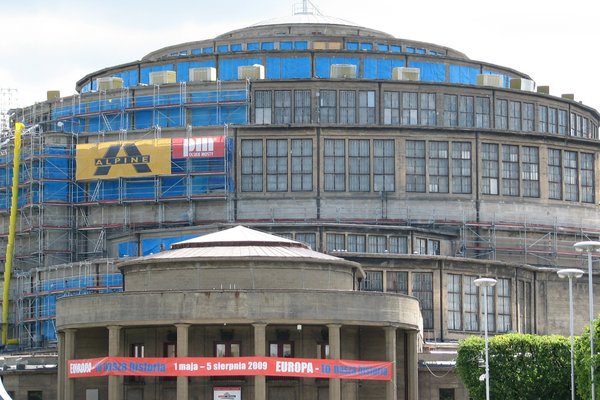Poland
Centennial Hall
The Centennial Hall in Wrocław is a multi-purpose recreational building that is a landmark in the history of reinforced concrete architecture.
The Hall was built in 1911-1913 to the plans of Max Berg to commemorate the 100th anniversary of victory over Napoleon in the Liberation Wars of 1813-15. The Hall had the largest dome in the world of its time, with a diameter of 65 meters. The core area also includes the exhibition grounds of Wroclaw and therefore is an outstanding example of modern recreational architecture.
Community Perspective: A bit dull to modern visitors, but still a milestone of modern architecture. You can usually also enter and see the interior of the building, but it might be closed when the Hall is in use for a sports tournament or concert. The surrounding grounds are quite nice and worth exploring.
Site Info
Official Information
- Full Name
- Centennial Hall in Wroclaw (ID: 1165)
- Country
- Poland
- Status
-
Inscribed 2006
Site history
History of Centennial Hall
- 2006: Inscribed
- Inscribed
- Type
- Cultural
- Criteria
- i
- ii
- iv
Links
- UNESCO
- whc.unesco.org
- Official
-
- halastulecia.pl — Centennial Hall
- Related
-
- en.wikipedia.org — Wikipedia on the Centennial Hall
All Links
UNESCO.org
- whc.unesco.org — whc.unesco.org/
Official Website
- halastulecia.pl — Centennial Hall
Related Resources
- en.wikipedia.org — Wikipedia on the Centennial Hall
Community Information
- Community Category
- Secular structure: Civic and Public Works
Travel Information
Silesia Hotspot
Recent Connections
-
Perfect Inscriptions
2006 -
Exhibition gardens
"The Exhibition Grounds, whose main fea… -
Early Modernism
"The Centennial Hall is an outstanding …
Connections of Centennial Hall
- Individual People
-
-
Hitler was here
"On September 12, 1930 Hitler held a speech in the Jahrhunderthalle for 25.000 people. In the period before the elections of March 13, 1932 (on March 3) Hitler was in Breslau again for a speech in the Jahrhunderthalle. In that same year he spoke at this location again on April 18 and October 19. In 1933, on March 1, Hitler spoke at the Jahrhunderthalle again. On March 22, 1936 Hitler spoke at the Jahrhunderthalle again. On November 20, 1943 Hitler spoke here for the last time."
-
- Trivia
-
-
Depicted in Mizielinska Maps
See i.pinimg.com
-
Built or owned by Germans
Built by a German architect at the time in which Wroclaw was a German city -
Modelled after
After Pantheon in Rome & Hagia Sophia in Istanbul
-
- History
-
-
Built in connection with an Anniversary
The opening of the hall was part of the celebration commemorating the 100th anniversary of the battle (of Leipzig) following the proclamation in Breslau by King Frederick of Prussia of the uprising against Napoleon’s occupation.
-
- Architecture
-
-
Domes
65m Reinforced concrete. Largest dome in world between 1913-30 -
Reinforced Concrete
-
Wooden architecture
17th century wooden church at Szczytnicki Park -
Japanese garden
at Szczytnicki Park -
Expressionist architecture
Labelled as Expressionist Architecture as well by Wikipedia. In the nomination file and the ICOMOS evaluation it is considered an early forerunner: “The comparative analysis has shown that the pioneering role of the Centennial Hall consisted also in its anticipation of the ideas informing architecture in the Expressionist style.” and “the Centennial Hall anticipated the later Expressionist and Organic Architecture.” -
Early Modernism
"The Centennial Hall is an outstanding example of early Modernism and the innovative use of reinforced concrete structures in the building industry." (Official description) -
Exhibition gardens
"The Exhibition Grounds, whose main feature the Centennial Hall, stands at the intersection of its principal axes, constitutes an integral spatial whole. They were designed jointly by Max Berg and Hans Poelzig." (Official description)
-
- World Heritage Process
-
-
Single Monuments
Also meets criterion i: masterpiece of human creative genius. -
Perfect Inscriptions
2006
-
- Human Activity
-
-
Locations for playing sport
Used for basketball & tennis tournaments
-
- Constructions
-
-
Theatres and Opera Houses
Used by Wroclaw Opera -
Monumental Fountains
Wroclaw Multimedia FountainSee en.wikipedia.org
-
- Timeline
-
-
Built in the 20th century
The Centennial Exhibition opened in May 1913 (AB ev)
-
- WHS Hotspots
-
-
Silesia Hotspot
In Wroclaw
-
- WHS Names
-
-
Name changes
"Centennial Hall in Wroclaw" was originally nominated as "Centennial Hall in Wroclaw (Poland)" but in its evaluation ICOMOS recommended a name change!
-
News
No news.
Recent Visitors
Visitors of Centennial Hall
- Adrian
- Adrian Turtschi
- Afshin Iranpour
- Alexander Barabanov
- Alexander Lehmann
- A. Mehmet Haksever
- Anna Wludarska
- Antonio J.
- Argo
- Artur Anuszewski
- Aspasia
- Assif
- Astraftis
- a.thum
- Atila Ege
- Bamse
- BaziFettehenne
- Bill Maurmann
- Bin
- Bropyk
- Carlos Sotelo
- Cezar Grozavu
- Chantal den Haan
- Cheryl
- Christer Sundberg
- Christian Wagner
- Christoph
- Claire Bradshaw
- Clyde
- Colossus
- Corinne Vail
- Csaba Nováczky
- CugelVance
- czesioszpachelka
- Dagmara
- Dani Cyr
- Daniel Chazad
- Daniel Gabi
- Danny L
- Dan Pettigrew
- David Berlanda
- DavidS
- del
- Dimitar Krastev
- Dirk-pieter
- Dolemite92
- Dorejd
- Elis
- Elisabeth Fransisca Situmorang
- Els Slots
- erdsaumnaht
- Erik Jelinek
- Errol Neo
- Eva Kisgyorgy
- Evgenii
- fabi-ddorf
- Fan Yibo
- Farinelli
- Federico P.
- Femke Roos
- Filip Murlak
- Frederik Dawson
- FS
- George Gdanski
- Grzegorz Andruszkiewicz
- Hadrianus
- Harald T.
- Harry Mitsidis
- henrik_hannfors
- Highlander
- Hubert
- Hurrvinek
- Iain Jackson
- Ian Cade
- Ivan Rucek
- Jacob Choi
- Jakob F.
- Jana and Matt
- Janina Lehmann
- janis
- Janos
- Jan Zimmermann
- Jarek Pokrzywnicki
- Jeanne OGrady
- Jezza
- JobStopar
- Joel on the Road
- Jonas Hagung
- Jonas Kremer
- Jonas Martinsson
- jonathanfr
- Jon Eshuijs
- Joyce van Soest
- KarenBMoore
- Kasia M.
- Kasper
- Kbecq
- Ken DJ
- KentishTownRocks
- Klaus Freisinger
- Krijn
- Kristin
- Krzysztof B
- Kurt Lauer
- Lara Adler
- LaVale
- lichia
- ljowers
- Loic Pedras
- Luboang
- Lucio
- Luis Filipe Gaspar
- Lukasz Palczewski
- lynnz317@aol.com
- Maciej Gil
- Maciej Gowin
- Mahuhe
- Małgosia Łupicka
- Manuelfunk
- marcel staron
- Martin
- Martina Rúčková
- Marton Kemeny
- Marty
- Mateusz
- MH
- Michael Turtle
- Mikko
- Mikko Syrjä
- Milan Jirasek
- Miloš Tašković
- miri2808
- MMM
- Mohboh
- MRZVA
- Mtlmr
- nan
- Nick M
- Nihal Ege
- palka25
- Patrik
- Paul Schofield
- peacemaker2142
- Peter Lööv
- Philipp Leu
- Philipp Peterer
- Piotr Wasil
- Potsdamer
- Purrfect
- Rafał Kałczuga
- Ralf Regele
- Ralf Rotheimer
- Randi Thomsen
- Remigiusz
- Reza
- Rick Ohm
- Roger Ourset
- Roman Bruehwiler
- Roman Raab
- Sandmann15
- serghei.belous
- Sergio Arjona
- Shandos Cleaver
- Simonf
- Solivagant
- Staceybtaylor
- Stanislaw Warwas
- Stijn
- Svein Elias
- Szucs Tamas
- Tamara Ratz
- Tarquinio_Superbo
- Tevity
- Thomas Buechler
- Thomas Harold Watson
- Thomas van der Walt
- Thorben
- triath
- Tsunami
- Twobaconsandaboston
- usagi1974
- Valentina
- Vanessa Buechler
- VB73
- voyager
- WalGra
- Walter
- Westwards
- Wojciech Fedoruk
- Yang Chengyu
- YaroMir
- Yevhen Ivanovych
- Zhenjun Liu
- Złoty Tłok Czesław
- Zoë Sheng
Community Reviews
Show full reviews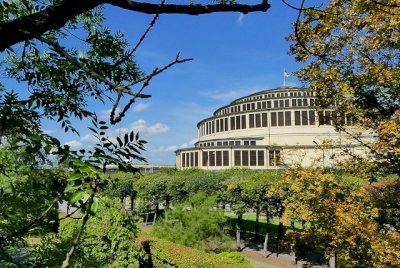
I visited this WHS in Summer 2019. The Centennial Hall of Wroclaw or Hala Ludowa in Polish occupies quite a large part of the modern city of Wroclaw and the arena is capable of housing some 10,000 people. There are ample parking spaces just next to the hall or near the surrounding gardens but beware of the traffic on a hectic working day.
The Centennial Hall together with the Four Domes Pavilion, the Pergola, and the Iglica are a Polish National Monument. There 'uniqueness' or importance lies in the fact that they represent an early landmark of reinforced concrete architecture. On a sunny day, the stroll around the concrete structure and dancing water display with an ice-cream in hand was rather pleasant but the whole structure is not much of a sight to behold in my opinion. Although it was ahead of its time when built, most huge sports complexes nowadays have a similar structure and the same defect in my opinion - they might be functional but immediately after some years, their overall state and appearance easily turn shabby and ugly without constant painting and maintenance.
There's a plastic UNESCO inscription plaque just by the entrance and photos of the metal ceiling from the inside which is the only thing to actually see but it won't make much of a difference in the overall impression. A similar experience can be had if you visit an indoor concert in a sports venue and look above. The majority of …
Keep reading 0 comments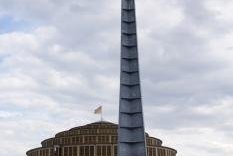
It has been reported that the workers were so scared by the revolutionary construction technique of this building that they refused to remove the casing of the concrete pillars, they feared that the huge dome would collapse. I'm not sure if this is true, at least it's a good story. The fact is that the dome has a diameter of 65 metres, it was the largest domed building in the world at the time of construction. But the Centennial Hall was also aesthetically a novelty: plain and simple forms, no cladding and only a minimum of decorative elements, a turning away from Historicism and a move towards the principle of “form follows function”. It is still the venue for various events, so undoubtedly a successful construction. But for today's visitors, the Centennial Hall is no longer monumental and overwhelming or even frightening, and though I have a fondness for modern architecture I'm also not very enthusiastic about the look of the building. Nevertheless it is a milestone of modern architecture and was trend-setting for the use of a new material: reinforced concrete. Therefore, it deserves the place on the WH list.
The surrounding is quite nice, I liked the grounds around the artificial pond and the water features, the winding colonnades with hundreds of columns and the Four-Dome Pavilion. It is a harmonious ensemble, only the Iglica monument is a bit annoying (photo), a hundred metres high needle which impairs the view to the main entrance of the Centennial Hall.
…
Keep reading 0 comments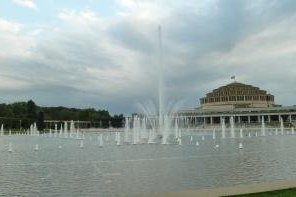
Gnomes, domes and Mocne Piwo was the theme I texted to my friend as I boarded the plane, and Wroclaw delivered on them, but what I wasn't expecting was that my rather high expectations of this Polish city would not only be met, but considerably bettered.
First off the domes. This was the world heritage site. I had been aware of the centennial hall for a long time, it was one of the buildings that stood out in my first encyclopaedia of architecture. I have to admit I have never really liked how it looks, but have a huge respect for the engineering that it entails. As I crawled closer through Wroclaw's traffic I noticed a lot of advertising and even more police on traffic patrol, and as I feared the hall was in use for an event on the day I chose to visit.
As such it provided me with an answer to the age old travellers riddle, "What do you do when the men's volleyball world championships hinder your sightseeing?" Ans. "You go to the Japanese garden!"
The enforced exploration of the surrounds of the hall was actually rather pleasant, the fountains were performing, the covered walkway was looking at it's renewed best and the Japanese garden was a welcome surprise. I did get to see inside, a friendly guard moved aside and gave me a good view of the interior as Russia beat Finland in what I am sure was a crucial match!?! I got caught up …
Keep reading 0 comments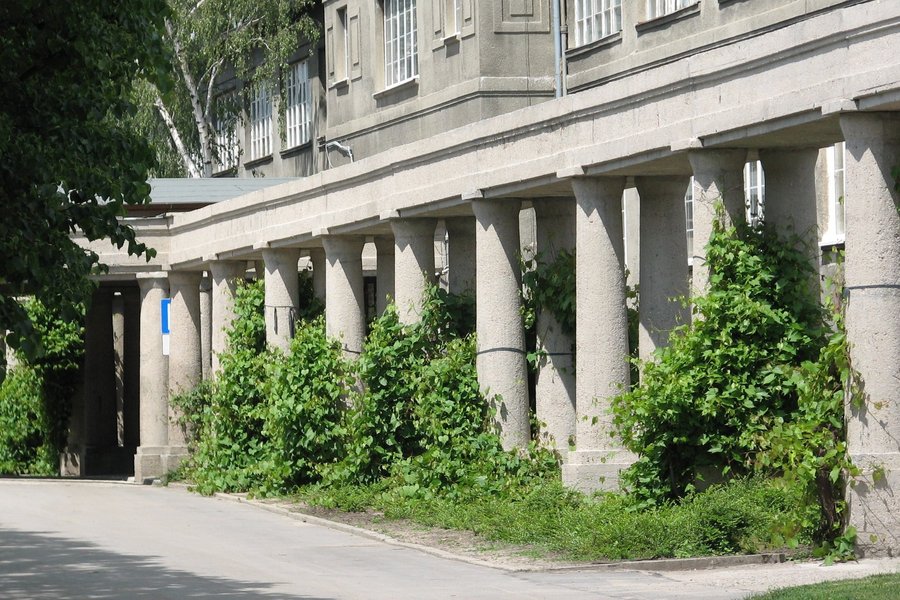
Wroclaw is really one of the most beautiful towns in Central Europe, and the Old Town very much resembles Krakow and Prague - although on a smaller scale, of course, with fewer tourists. Built to commemorate the 100th anniversary of the Battle of Leipzig (hence the German name "Jahrhunderthalle"), the Centennial Hall is quite far away from the centre (I took a taxi to get there and walked back), but is located in a nice, green area near the zoo. There is a small entrance fee to pay, and you can see an exhibition on its construction (interestingly, it was the building whose dome finally surpassed the Pantheon's in diameter), then you are free to walk around the entire building. I was not overly impressed (well, it's a "landmark of reinforced concrete architecture"), but it does make for a pleasant outing in a very nice city, so there is not much to complain about. Today the hall is used for many different purposes, including concerts and even hosting some games in this year's Volleyball European Championships.
Keep reading 0 comments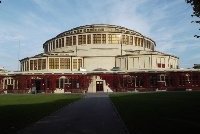
I travelled to the Zoo stop by tram #2 from Wroclaw Glowny station. The Centennial Hall is just accross the road from the zoo.
Because I reached the site early I toured the grounds first, using the pergola walkways and footpaths to reach the musical fountain, the Japanese Garden and the little wooden church of St John of Nepomuk.
By then the Hall was open for visits. I climbed up to a vantage point in the tiered seating to admire this amazing structure. Considering that the reinforced concrete columns and beams were all cast in situ using simple wooden formwork, the finish achieved is fantastic. In its day it would have been a significant achievement.
Keep reading 0 comments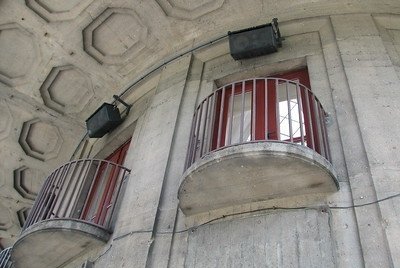
Like a modern-day stadium, the Centennial Hall was used by all who aimed to attract large audiences: from Adolf Hitler to Marlene Dietrich to Pope John Paul II. It still functions as a concert hall and sports arena. I felt a bit awkward at first to visit a site like this, but its historic and architectural value is recognized by more than WH spotters alone. For an entrance fee of 7 zloty you're allowed to have a look around and watch a video. I was joined by several groups of elderly German tourists, probably on a tour of remembrance in this former German town.
The core zone of the WHS also includes the exhibition grounds around the Hall. There's a square leading up to the hall that is modelled after a classical forum. A nice place to sit and relax for a while. There's the Four Dome Pavillion too, like mini-versions of the dome of the Hall itself. The large concrete pergola that surrounds a pond at the moment is in the process of being restored.
Keep reading 0 comments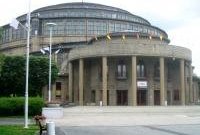
Sometimes you ask yourself what can really become a World Heritage Site? I certainly asked myself this question when I first laid my eyes on the Centennial Hall in Wroclaw - a huge grey concrete building that does not exactly place itself on the top-ten list of most beautiful buildings of the world.
But as always, when it comes to World Heritage Sites, there is an interesting story to be told; named Jahrhunderthalle in German it was designed by the famous architect Max Berg in 1913. At the time of construction it was the largest reinforced concrete structure in the world and certainly a pioneering work of modern engineering and architecture. My local guide told me that at the time of construction, some of the workers was even afraid to enter the site because they thought that the whole structure would collapse. But almost 100 years later it still stands strong and has survived to major wars and seen everything from large scale nazi- rallies to large sports events as well as concerts with many famous artists, from Marlene Dietrich and Paul Anka.
The hall is located a few kilometres east of the Wroclaw city centre so it takes a walk or a tram ride to get there. The hall is well worth visiting if you happen to be in the neighbourhood or checking out the beautiful Old Town of Wroclaw
Keep reading 0 comments
